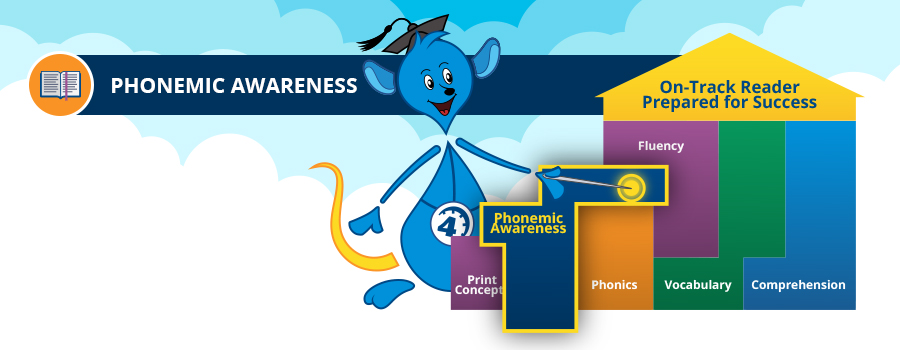Phonemic Awareness Skills
The earliest stage of learning to read is the ability to distinguish between the small units of sound called “phonemes.” This is the first component of the Reading Skills Pyramid, which includes:
Beginning readers must be able to pick out the different sounds in words (phonemic awareness) as well as understand the connection between those sounds and the written word (phonics). This knowledge leads to being able to identify words more readily (fluency), being able to understand the definition of those words (vocabulary), and—ultimately—being able to use those words to gain new information (comprehension).
What Is Phonemic Awareness?
Having phonemic awareness means listeners are able to hear, identify and manipulate the smallest mental units of sound—phonemes. You will know your young reader has the ability to work with those units if he or she can:
- Tell you the first sound they hear in a specific word (e.g., zebra)
- Identify sounds that are similar across a group of words (e.g., color, cake, candy)
- Create a new word by substituting one phoneme for another (e.g., bike becomes hike)
- Recognize all the individual phonemes in a single word (e.g., dog -> d, o, g)
- Blend individual phonemes into a single word (e.g., b, ī, k -> bike)
Phonemic awareness is often mistaken for phonological awareness, which is the ability to distinguish sounds from one another. Phonological awareness occurs before phonemic awareness. Children without phonological awareness must learn to hear the difference between “dice” and “rice” before they understand that the “d” in dice and the “r” in rice are the letters that change the word.
Why Is Phonemic Awareness Important?
Phonemic awareness is important because without this vital skill, reading difficulties can occur early on. Phonemic awareness skills are an aspect of learning to read which are often overlooked. And while each child is different, most learn to read following a similar sequence. Many are able to continue with no trouble when steps are missed, but others may have difficulty later because they didn’t make the connection.
As phonemic awareness is developed, children will become interested in how words are portrayed in print. Daily reading sessions, with the children following along, should help develop their understanding of print concept and feed their curiosity. This interest in decoding words is fuel for children learning the alphabet and phonics.
Phonemic Awareness Curriculum
The computer is an excellent tool for teaching phonemic awareness. Time4Learning’s language arts curriculum provides a complete reading program that takes a fun, animated approach to learning. Pre-reading skills such as phonemic awareness, phonological awareness, and the alphabet are taught in a sequence that builds skills progressively, before moving students into phonics and reading comprehension.
The reading readiness skills included in Time4Learning’s award winning program are designed to help early readers:
- Isolate
- Identify
- Blend
- Segment
- Delete
- and Add
phonemes to develop phonemic awareness. Because the format combines visual and auditory lessons, the approach is often more effective than traditional textbooks.






